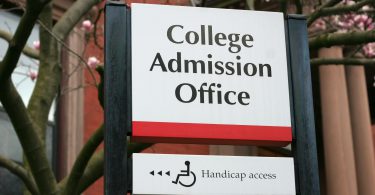Winter is coming and baseball may no longer be the focus of your day. If you are serious about playing college baseball, you’ll want to take advantage of the extra down time during the Winter to get organized and prepared for the spring season and put together a rock solid recruiting plan. If you aren’t sure what you should be doing this winter to improve your college baseball prospects, use this list to get started and check back on the website for more ideas!
1. Meet with your Parents/Guardians
Sit down with your parents/guardians and figure out all the financial details of how you will pay for college. Costs can vary enormously. You need to be realistic about how you will pay for college and what kind of budget you are working with. Will you have help paying for school? Will you take out loans? Do you have a college savings? Are there any scholarships that you want to apply for? This information will influence the schools you pursue and your discussions with coaches about scholarships, work-study opportunities, and financial aid. Doing a basic budget analysis can be very helpful and we talk about how to do one here.
2. Meet with your Coach
Meet with your high school coach or another trusted coach who is familiar with the various levels of college baseball to get an honest evaluation about your ability and the level of college baseball you should pursue. Many well qualified kids end up without a college program because they fixate on levels of college baseball that are unrealistic for their ability level. Being honest about your ability is the most important thing you can do to have a successful recruiting process. There is great baseball at every level of college baseball.
3. Create/Revise your List of Schools
Your list of schools is a constant work in progress. Spend time looking up schools that match the criteria that’s most important to you. The criteria most important to you may be completely different than your friends. If you don’t know what you are looking for in a college fit, you should spend plenty of time figuring that out. This list may give you some ideas. Your interests and limitations (financial or otherwise) should guide your entire recruiting process.
4. Research Schools
Spend time researching and investigating the schools on your list. Doing a thorough job while researching schools is time consuming, but it will pay off. In addition to information about the school, take a look at the baseball website. Look at the roster. How does the situation look at your position? Look at the news section. Are they generating content on the program year round? This can give you an indication of how important the baseball program is in the grand scheme of the athletic department. Is there any baseball video? If so, how do you measure up to the competition? Do some social media research on the players and coaches as well. Create private Twitter Lists and get a better feel for the messages they are putting out. A little research will go a long way in revealing the character of a program and how it may or may not fit with what you are looking for.
5. Visit Schools
The winter can also be a great time to visit schools that have been recruiting you or schools that you have interest in. Here is what you need to know about campus visits and how to ace your campus visits with college baseball coaches. You’ll also find everything you need to know about visits on our page dedicated to this step of the recruiting process here. Be aware that taking an official visit or a visit set up with the coaching staff can speed up the recruiting process and sometimes coaches take it as a sign that you are ready to commit. Be a good communicator so there are no mixed signals. If you are an underclassmen, realize that taking an informal campus visit (walking around on your own since you may not be able to meet with coaches due to NCAA rules) on your own can still be a great way to get a feel for a school, campus, and start to check out the baseball facilities.
6. Renew your Focus on Academics
You already know how important your grades are for playing college baseball, so take advantage of having extra study time. Get organized and get ahead. Good grades and test scores will open up a lot of doors and make college cheaper, too! We have plenty of academic resources on the KPB website and summarize them all and include links to the full articles in our Academics First resource.
7. Study for and Take Standardized Tests
Study for and take the SAT or ACT. Unless you are dead set on going to a junior college, you will need to take one of these tests and meet the NCAA academic eligibility requirements for GPA, Test Scores, and Core Courses. But meeting the minimum requirements are rarely enough. Coaches don’t want to recruit players when their academics are a concern. They want to keep the focus on the field. Standardized test scores are extremely important and doing well can sometimes make up for a poor start in your high school classes. It may be something you don’t want to do, but remember: better grades (and test scores)=more opportunities!
8. Reach Out to Programs of Interest
While coaches are busy getting ready for the upcoming season, they too have a bit more down-time than usual with fall practices coming to a close and the holidays on the horizon. Now is a great time to send an email expressing interest in a program. This email should be well thought out and planned, not a spur of the moment idea riddled with spelling and grammatical mistakes. Read these articles and learn how to know you are ready to contact coaches and how to contact coaches in the way that’s most likely to get read and receive a response. The chances of having your email read as an unknown player are better now than most other times of the year.
9. Plan Active Throwing Rest/Build Up Time
Any good winter off-season will include a period of active rest from throwing and a prolonged period of building the arm back up. You want to balance rest, recuperation, and preparation so you can hit the ground running this spring. Spring success is born out of a good off-season plan. Attack your weaknesses and build on your strengths! Here is more help on building a solid off-season plan. *Note: We aren’t suggesting that you have to completely shut down. In fact, we wouldn’t suggest starting that process this late. You need to plan anywhere from 4-8 weeks to gradually increase work load and get your arm back in shape (on-ramp), depending on the kind of off-season throwing program you were on.*
10. Get Ready for College Coach Contact
Make sure you have the following things ready for when a college coach comes calling: Updated transcripts/test Scores, upcoming game schedule, contact information for your coaches or references, and a link to a short skills video. Here are tips for pitchers and position players on making a short, low-budget recruiting video. If you have these 4 things ready for coaches, you will show them that you are serious about college baseball.
If you can take care of these things in the winter while you have more free time, you are setting yourself up for success when the sun comes out and recruiting heats back up!
11. Make Big Gains in the Weight Room
If you want to play college baseball, getting on a good strength and conditioning program is key. We explain why serious ballplayers need to have a plan in the weight room in this article. With minimal on-field activity and 8-12 weeks with more free time, the off-season is a time when you should be focusing on adding strength. Your gains will make a big difference on the field in the spring!
12. Spend 10-15 Minutes a Day on Recruiting
As we often say, 10-15 minutes a day goes a long way! Make it a point to learn about college baseball, the recruiting process, and work on building a personal plan to achieve your college baseball dreams a little bit each day. If you spend 10-15 minutes a day on recruiting, you will look back at the end of winter and realize that you are in a much better position to play at the next level than you were when the off-season began!







